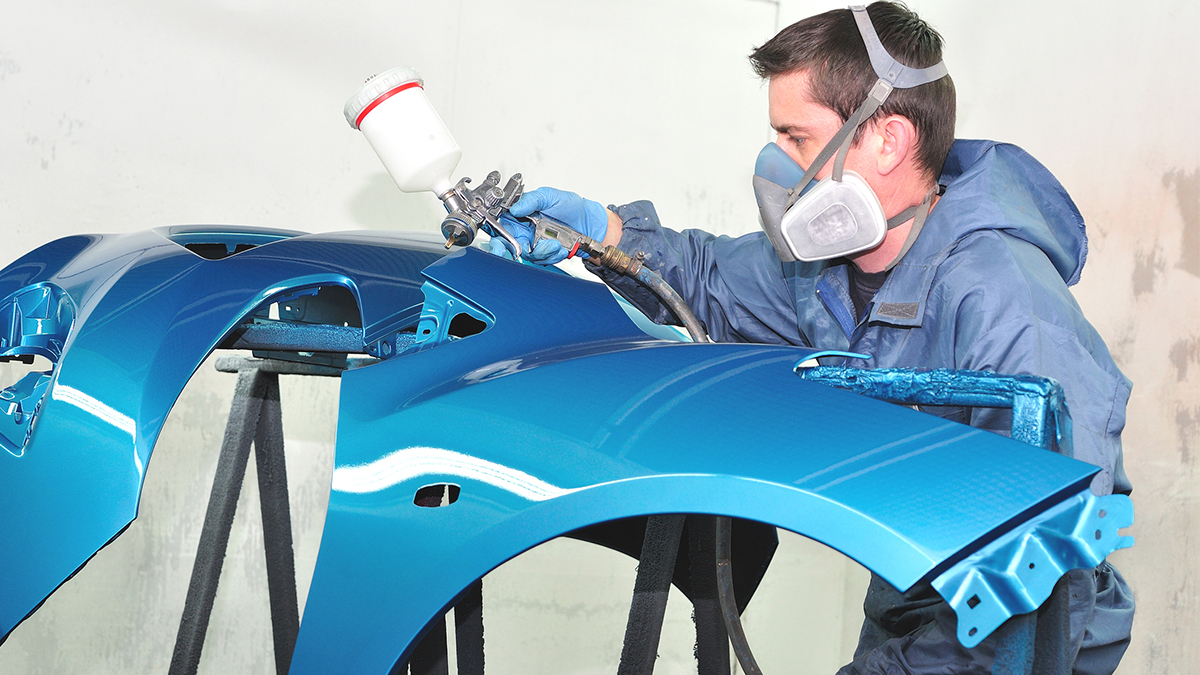Metal fabricators aiming to venture into finishing processes should familiarize themselves with two prevalent options—liquid and powder coating—along with the prerequisites necessary for a company seeking to employ either or both.
Introduction to Liquid Coating
Liquid coatings consist of fundamental raw materials, including additives, carriers, pigments, and resins. Although additives constitute a small portion, they contribute unique characteristics to the finish, such as rust prevention or UV protection. The carrier, the primary liquid in paint formulation, can be water, solvent, or a combination of both. While solvent-heavy liquid coatings have traditionally dominated metal finishing, there is a growing interest in waterborne and high-solids coatings due to their minimal volatile organic compound (VOC) emissions. Pigments influence gloss, with higher pigment volumes resulting in lower coating gloss. Resins serve as the base, governing overall coating performance.
Liquid coatings can be applied in various thicknesses, with manufacturers often seeking a balance between maximum protection and minimal paint mil thickness.
Advantages of Liquid Coating:
1. Economical:
Thin application reduces material usage, making it a cost-effective option.
2. Variety of Choice:
Offers a broad range of color choices, including metallics and pearls.
Provides various specialty coats like glow-in-the-dark and Teflon, suitable for specialty markets.
3. Lower Error:
Reduces film build occurrences, minimizing rejected parts and production time.
4. Easily Markable:
Sections can be easily marked off without the need for an oven, as liquid paint doesn't require baking.
Introduction to Powder Coating
Powder coatings eliminate the need for a carrier, with additives, pigments, and resins formulated in powder form. The powder, electrostatically charged, is conveyed via compressed air and attracted to a grounded part. The part undergoes heating in an oven, transforming the powder from solid to liquid and then to a solid coating, generally with minimal or zero VOCs.
Advantages of Powder Coating:
1. Environmental Benefits:
Zero or near-zero VOC emissions.
Allows thicker coatings without running or sagging.
Recyclable overspray enables nearly 100% utilization of the coating.
Produces less hazardous waste in production lines.
2. Consistency in Appearance:
Fewer differences in appearance between horizontally and vertically coated surfaces.
3. Specialty Effects:
Enables a wide range of specialty effects not achievable with other processes.
Environmental Impact
Solventborne Coatings:
Dependable but reduced due to VOC reduction efforts.
Shift towards environmentally friendly coatings like waterborne and high-solids formulations.
High-Solids Coatings:
Have at least 65% solids content, minimizing solvents.
Multipart application systems formulated for mixing seconds before application.
Waste and Recycling
Liquid Coatings:
Overspray cannot be reclaimed, leading to disposal challenges.
Powder Coatings:
Recyclable with proper reclamation equipment, subject to local regulations.
Disposal considerations, including sealed containers or baking into bricks for landfill disposal.







.png)






